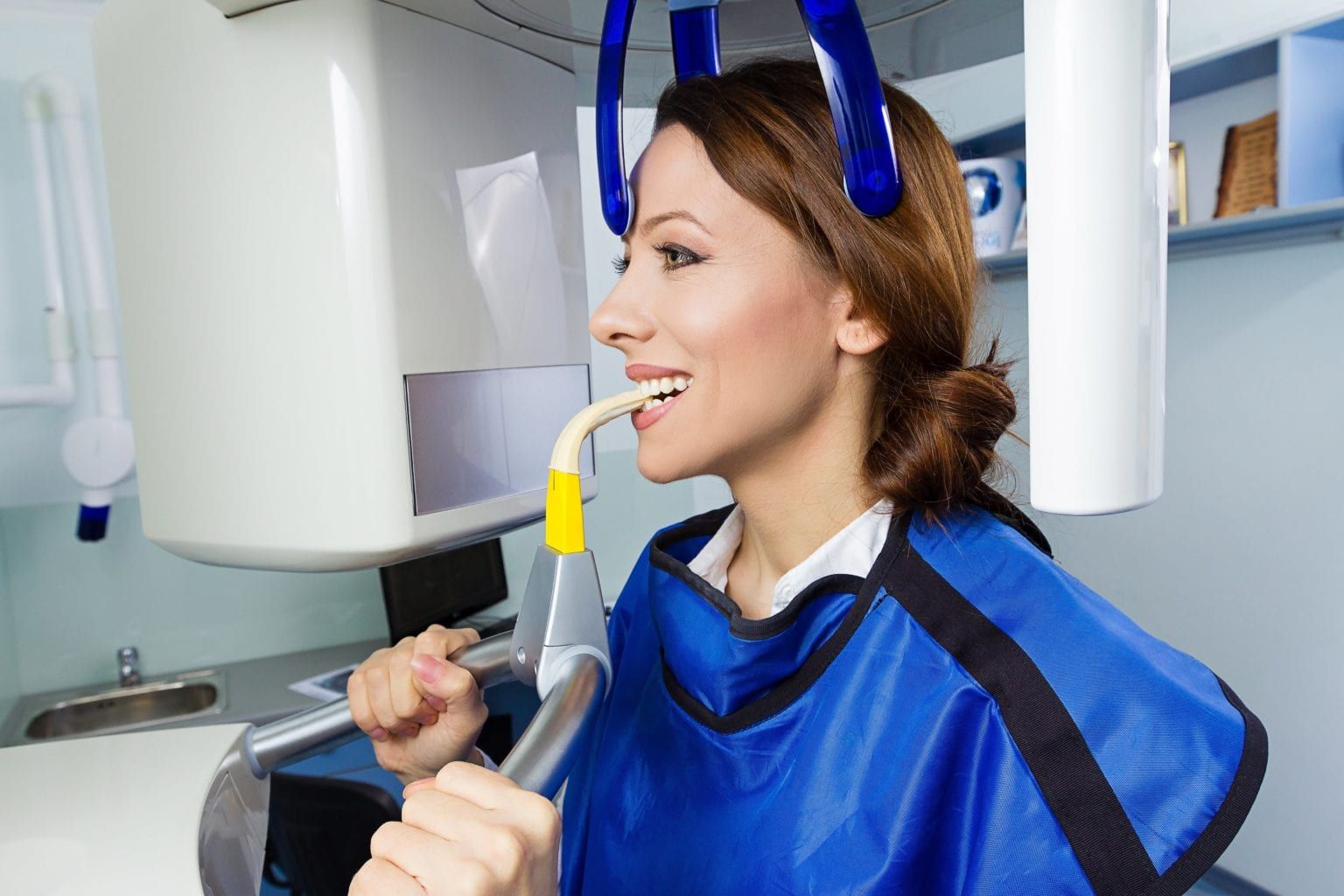At 3D Dentistry in Bradenton, FL, we utilize advanced Cone Beam and 3D imaging technology to provide you with precise and comprehensive dental care. Our experienced team, led by Dr. Bustos, harnesses the power of this cutting-edge technology to enhance diagnosis and treatment planning.
Dental cone beam computed tomography (CBCT) is a specialized type of dental x-ray used when traditional x-rays are not enough. Unlike traditional dental x-rays, a CBCT scan produces a 3-D image that details your teeth, soft tissues, blood vessels, nerve pathways, and bone. This allows your dentist to thoroughly examine your mouth from a variety of angles and see the relationship between the various structures. CBCT scans are often used to help your dentist create a treatment plan.

Did You Know?
Although CBCT scans produce similar results to a traditional CT scan, they are not the same thing. Cone beam CT earned its name because it uses a cone-shaped x-ray beam that moves around the head to obtain multiple images that it compiles into a single image. Additionally, CBCT scans are faster and use less radiation than conventional CT scans.
Symptoms
- Limited visibility in traditional dental X-rays.
- Complex dental issues requiring detailed evaluation.
- Preparation for dental procedures like implants or orthodontics.
Why is Cone Beam (CBCT Imaging) Needed
Cone Beam and 3D imaging offer unparalleled clarity and accuracy, allowing us to:
- Detect hidden dental issues.
- Plan complex procedures with precision.
- Reduce radiation exposure compared to traditional X-rays.
Treatment Process
- Consultation: You’ll discuss your concerns with Dr. Bustos.
- 3D Imaging: Our advanced technology captures detailed images.
- Diagnosis: Dr. Bustos reviews the images to formulate a tailored treatment plan.
- Treatment: Depending on your needs, various dental procedures are performed.
- Follow-up: We ensure your treatment’s success through careful monitoring.
Prevention
Regular dental check-ups combined with Cone Beam and 3D imaging can help identify issues early, preventing more extensive problems.
Outlook
Expect precise diagnoses, more efficient treatments, and reduced discomfort thanks to this advanced technology.
Frequently Asked Questions:
Do I need a CBCT scan?
Your dentist may perform a CBCT scan for various reasons, including:
- Orthodontic treatment planning
- Dental implant treatment planning
- To detect, monitor, or treat jaw tumors
- To diagnose temporomandibular joint disorder (TMJ/TMD)
- Surgical planning for extractions or reconstructive surgery
In some cases, CBCT scans are simply performed to evaluate the underlying structures to ensure that everything is as it should be.
What happens during a CBCT scan?
CBCT scans are both quick and painless. First, you will be asked to either sit or stand under the CBCT machine while the chin rest is adjusted to your height. You will also be given a lead apron to wear during the scan. Then you will need to remain still while the machine rotates entirely around your head. A full mouth scan can take about 20-40 seconds, while a regional scan only takes about 10 seconds to complete.

What happens after a CBCT scan?
After your CBCT scan, you can immediately return to your usual activities and will have no special instructions to follow. You can expect that your dentist will discuss your scan with you and answer any questions you may have.
Contact Us for Advanced Dental Care
Take advantage of the latest in dental technology. Contact 3D Dentistry at 941-253-2300 to schedule your appointment and experience the future of dental care.

